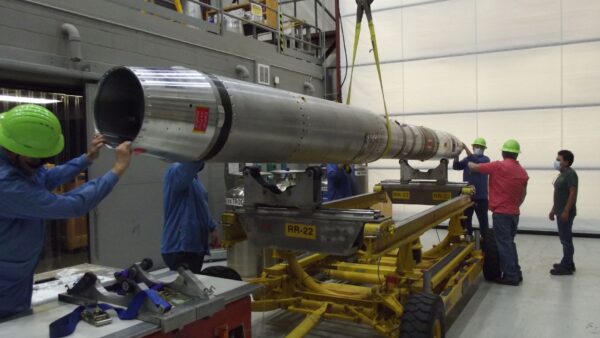It’s best not to look directly at the Sun, unless you’re one of NASA’s Sun-observing instruments. And even then, doing so will cause some damage. Exposure to the Sun degrades light sensors of all kinds, from retinas in the human eye to instruments aboard NASA’s Solar Dynamics Observatory satellite, or SDO. Fortunately, with periodic calibrations, the latter can continue transmitting high-quality data to researchers on Earth.

SDO’s Extreme Ultraviolet Variability Experiment, or EVE, uses sounding rockets for calibration. During their roughly 15-minute flights, these suborbital rockets carry a duplicate of the Sun-observing EVE instrument up to about 180 miles above Earth, where it records measurements that will keep its twin instrument aboard SDO in tune. Tom Woods, a solar physicist at the Laboratory for Atmospheric and Space Physics at the University of Colorado, is the principal investigator of the SDO/EVE instrument.
The 30-minute launch window for the next EVE calibration flight opens at 11:25 a.m. MDT on Sept. 9, 2021, at the White Sands Missile Range in New Mexico.
SDO’s EVE is a space instrument that measures the Sun’s extreme ultraviolet light. The Sun’s activity causes huge variations in the outputs of this powerful radiation, which is invisible to our eyes and is absorbed by Earth’s atmosphere before it reaches the ground.
Solar flares, for example, unleash massive amounts of extreme ultraviolet light. EVE makes it possible for researchers to keep tabs on the Sun in almost real time. It takes less than a second for SDO data to reach Earth and another 15 minutes for the data to be processed into a usable form.
This speed is important because the impacts of this variation in extreme ultraviolet light can sometimes be felt on Earth. Bursts can disrupt Earth’s atmosphere and, as a result, the GPS or radio signals that travel through it. “Part of our science is providing these measurements for the space weather operators who worry about how our communication and navigation systems could be disrupted due to a solar flare,” said Woods.
But solar radiation and the harshness of space degrade EVE’s sensors over time. So Woods’ team and NASA regularly send sounding rockets – from the nautical term “sound,” meaning to measure – into space to recalibrate EVE and keep the data accurate.
From aboard the sounding rocket, the copy of the EVE instrument measures extreme ultraviolet light before parachuting back down to Earth for reuse. The instrument must be in space to record these measurements because the atmosphere absorbs most ultraviolet light. Other than its brief and occasional forays into space, the duplicate instrument spends its time on Earth, protected from the harsh space environment and within reach of scientists for tune-ups. By comparing the measurements from this EVE instrument to those from its twin on SDO, researchers can correct for any degradation on the satellite version. The information is used to validate the calibration of ten instruments aboard other spacecraft as well.

After SDO launched in 2010, Woods and his team aimed to recalibrate the instrument about every six months. Now, they shoot for about once every two years because the rate of degradation slows over time. However, the coronavirus pandemic delayed the last launch, so they are now over the three-year mark. “We’re anxious to get this one launched and see how well everything’s doing,” Woods said. Once they have the new numbers, they will re-run data from the last few years to ensure the most accurate measurements possible.
Between sounding rocket launches, the EVE team also uses weekly calibration measurements from SDO’s EVE instrument itself. But, Woods said, those calibrations are not as informative. “It doesn’t give you a direct measure of degradation,” he said. “The only way to really nail down that degradation is to do this type of cross-calibration.”
The Earth-dwelling EVE is being readied for its tenth trip into space in 15 years (it started flying before SDO was launched), and new questions are still emerging. “How many times can you launch this before something breaks?” Woods said. “Launch vibration is hard on it, and the landing is hard on it, too.”
The exact technology inside EVE doesn’t exist anymore, having been replaced by newer versions, but Woods and his team are building a replacement in case something breaks in the next few years. “It is getting old,” he said. “I don’t know how many more missions it can survive, but so far – knock on wood – it’s held up so many years already.” During that time, it has enabled us to see our Sun like never before. Woods hopes it will continue shedding light on the Sun’s activity for years to come.
Related Video:
NASA Goddard Space Flight Center



